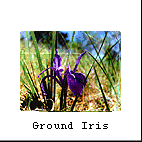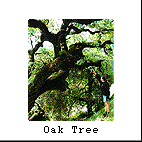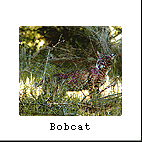 Henry Coe State Park is the
largest state park in Northern California including the Oristimba Wilderness
enclosed within this quintessential Mediterranean landscape. Characterized by
grassy hills dotted with sprawling oak trees, this rugged yet beautiful landscape
has become a local Mecca for mountain bikers, day hikers, equestrians and weekend
backpackers. During the spring time (around April), thousands of people flock
to the fields of wildflowers waving in the wind on a warm weekend. Yet tucked
behind this heavily used radius of traffic lies a vast hinterland reminiscent
of old California, when cattle and sheep outnumbered people. You will also discover
wildlife such as: wild pigs, turkeys, coyotes, snakes, hawks, lizards, golden
eagles, foxes, raccoons, skunks and mule deer.
Henry Coe State Park is the
largest state park in Northern California including the Oristimba Wilderness
enclosed within this quintessential Mediterranean landscape. Characterized by
grassy hills dotted with sprawling oak trees, this rugged yet beautiful landscape
has become a local Mecca for mountain bikers, day hikers, equestrians and weekend
backpackers. During the spring time (around April), thousands of people flock
to the fields of wildflowers waving in the wind on a warm weekend. Yet tucked
behind this heavily used radius of traffic lies a vast hinterland reminiscent
of old California, when cattle and sheep outnumbered people. You will also discover
wildlife such as: wild pigs, turkeys, coyotes, snakes, hawks, lizards, golden
eagles, foxes, raccoons, skunks and mule deer.
 This
state park was a working cattle ranch up until the 1930's. In 1952 the Coe family
generously donated some 12,500 acres to the people, and today, the park approaches
nearly 80,000 acres and is still surrounded by large working cattle ranches
in all directions. But much of this land remains wild. Formed within the folded
and faulted Diablo Range adjacent to the populous Santa Clara Valley, this inland
part of California is remote and rugged. Geologically speaking, much of the
land is composed of sea floor sediments know as graywacke, shale, chert and
limestone thrust up from plate tectonic pressure. A few outcrops of volcanic
andesite and a historic hotspring provide evidence of past volcanic activity.
Climatically, Henry Coe gets hot in the summer. The slight elevation (3000 feet)
does little to alleviate the intense summer sun where temperatures can reach
100 degree Fahrenheit. Consequently, little water is found in the summer except
in springs or sheltered canyon bottoms. Potable water is available at the visitor
center; however, most people choose to backpack this area in the spring or fall
when water is more available and temperatures are more balmy.
This
state park was a working cattle ranch up until the 1930's. In 1952 the Coe family
generously donated some 12,500 acres to the people, and today, the park approaches
nearly 80,000 acres and is still surrounded by large working cattle ranches
in all directions. But much of this land remains wild. Formed within the folded
and faulted Diablo Range adjacent to the populous Santa Clara Valley, this inland
part of California is remote and rugged. Geologically speaking, much of the
land is composed of sea floor sediments know as graywacke, shale, chert and
limestone thrust up from plate tectonic pressure. A few outcrops of volcanic
andesite and a historic hotspring provide evidence of past volcanic activity.
Climatically, Henry Coe gets hot in the summer. The slight elevation (3000 feet)
does little to alleviate the intense summer sun where temperatures can reach
100 degree Fahrenheit. Consequently, little water is found in the summer except
in springs or sheltered canyon bottoms. Potable water is available at the visitor
center; however, most people choose to backpack this area in the spring or fall
when water is more available and temperatures are more balmy.
 At
the visitor center you can get a glimpse of this historic way of life through
interpretive displays of the ranch and its annual events such as calf brandings
and cattle gatherings. You can also browse through the old barns to see a horse-drawn
wagon and rusting ranch implements. At the visitor center, where most people
start, you can also get an idea of the expanse of this park, which is over 100
square miles today. Looking at the maps you can choose a path taking you merely
a mile to the crest or on a lengthy trek, days into the backcountry, either
by loop trail or even on a through hike to Pacheco Pass (Hwy 152). Henry Coe
also has another rarely-used entrance via Gilroy.
At
the visitor center you can get a glimpse of this historic way of life through
interpretive displays of the ranch and its annual events such as calf brandings
and cattle gatherings. You can also browse through the old barns to see a horse-drawn
wagon and rusting ranch implements. At the visitor center, where most people
start, you can also get an idea of the expanse of this park, which is over 100
square miles today. Looking at the maps you can choose a path taking you merely
a mile to the crest or on a lengthy trek, days into the backcountry, either
by loop trail or even on a through hike to Pacheco Pass (Hwy 152). Henry Coe
also has another rarely-used entrance via Gilroy.
 The
most popular paths are closest to the visitor center, such as the Monument Trail
climbing to the crested high point, where you can see an old memorial of Henry
Coe beneath stately ponderosa pines. Here in the shade, you can view virtually
all of the eastern half of the park. On another nearby path you can clip down
to Frog Lake nestled within a nearby valley less than a couple of miles away.
In valleys like these, you will discover "cooler" vegetation such as the aromatic
laurel tree or the white-barked sycamore tree hovering over an intermittent
creek. Note, however, that even simple hikes like these require time because
of steep hills. It is not uncommon to see a strong mountain biker walk his or
her bikes back up a steep trail.
The
most popular paths are closest to the visitor center, such as the Monument Trail
climbing to the crested high point, where you can see an old memorial of Henry
Coe beneath stately ponderosa pines. Here in the shade, you can view virtually
all of the eastern half of the park. On another nearby path you can clip down
to Frog Lake nestled within a nearby valley less than a couple of miles away.
In valleys like these, you will discover "cooler" vegetation such as the aromatic
laurel tree or the white-barked sycamore tree hovering over an intermittent
creek. Note, however, that even simple hikes like these require time because
of steep hills. It is not uncommon to see a strong mountain biker walk his or
her bikes back up a steep trail.
 For
overnight stays, the park has designated backcountry campsites throughout the
park as well as group sites and equestrian camps. The average backcountry camp,
such as Poverty Flat, is only a few miles away. This option is the best way
to enjoy the park because you will get a sense of how wild California still
remains within its coastal mountains. Just a short stop from San Jose and the
larger San Francisco Bay Area, Henry Coe State Park remains worlds apart.
For
overnight stays, the park has designated backcountry campsites throughout the
park as well as group sites and equestrian camps. The average backcountry camp,
such as Poverty Flat, is only a few miles away. This option is the best way
to enjoy the park because you will get a sense of how wild California still
remains within its coastal mountains. Just a short stop from San Jose and the
larger San Francisco Bay Area, Henry Coe State Park remains worlds apart.
For backcountry camps, a small fee is charged. Additionally, twenty (20) first-come, first-serve campsites are available behind the visitor center with primitive accommodations. Currently the fees are: parking $5, campsites $8, backcountry $3 (no dogs). The spring season is busiest usually until the wild flowers start to shrivel up.
Best parts: Mediterranean landscape (lots of it) with sprawling oak trees, wildflowers, wildlife, and year-round camping.
Directions - From Highway 101 at Morgan Hill - take the East Dunne Avenue Exit. A sign says to Henry Coe State Park 13 miles. Follow this road until it dead ends at Henry Coe State Park. At 4 miles you will see a reservoir on this scenic drive up the hill.Important Information: